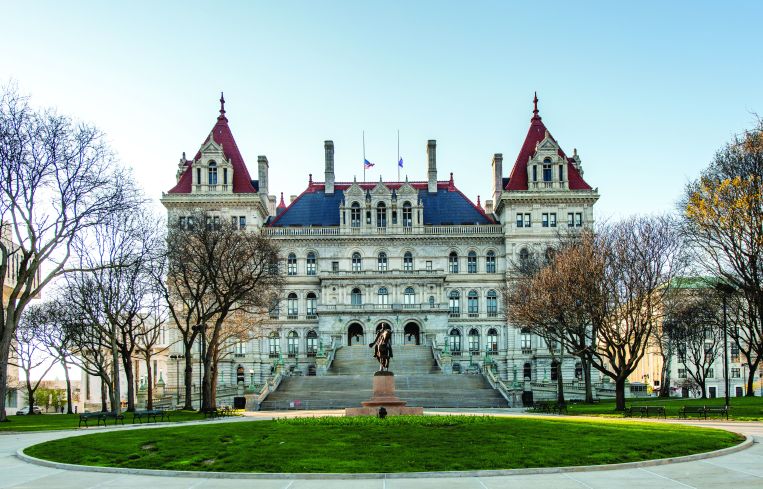How to Strengthen New York’s State Low-Income Housing Tax Credit Program
By Jolie Milstein March 28, 2025 9:38 am
reprints
As the governor and state lawmakers iron out the final details of New York’s fiscal year 2026 budget, the focus in these final days tends to turn from the broader vision for our state to the nuances of the negotiations between the fabled “three leaders in the room.” But this process should also be a reminder that bold action can yield meaningful change that has a dramatic impact on the lives of ordinary New Yorkers.
For inspiration, they can look back a quarter of a century to reflect on the budget negotiations in early 2000, which resulted in the creation of the New York State Low-Income Housing Tax Credit (SLIHC) program.
Modeled after the federal Low-Income Housing Tax Credit (LIHTC) program, SLIHC provides a dollar-for-dollar reduction in state tax liability to investors in exchange for providing financing to build or rehabilitate affordable rental housing. The state’s Homes and Community Renewal (HCR) agency reviews applications on a competitive basis and allocates the credits to affordable housing projects.

The project developer then finds tax credit investors, who provide cash that is directed into the development. The credits are typically awarded over a 10-year period, and the project must meet long-term affordability requirements, or they are subject to recapture.
After several years of hard work by affordable housing developers and advocates — including the organization I currently lead, the New York State Association for Affordable Housing (NYSAFAH) — SLIHC was adopted as part of the fiscal year 2001 state budget. In its first year, the state budget allocated just $2 million for SLIHC, a trial, if you will, to gauge investor interest and the impact on affordable housing development.
A quarter of a century later, in this year’s state budget, Gov. Kathy Hochul and the state legislature proposed doubling the annual SLIHC allocation to $30 million for each of the next four years. This record commitment will bring the total aggregate funding for the SLIHC program to $307 million on April 1, 2029.
SLIHC was a groundbreaking program that has financed the new construction and preservation of countless affordable housing units throughout our state. It’s a real testament to the program’s early champions and the government partners that were willing to listen, think creatively, and meet the challenge.
We need that kind of visionary leadership in today’s political environment. For the affordable housing community, the current environment of political and economic uncertainty is untenable. Ours is an industry that needs predictability. With the costs of labor and materials soaring, it creates exactly the kind of uncertainty that makes it harder for developers to invest in projects.
In this climate, New York’s state-level efforts are more important than ever. Many federal LIHTC projects are reaching the end of their 30-year regulatory period and will no longer be subject to affordability requirements. This is projected to lead to the loss of over 14,000 affordable homes in New York between 2023 and 2028, according to data from the National Housing Preservation Database. Many of these buildings are in need of repairs, providing an opportunity to offer new federal and state subsidies in exchange for an additional period of affordability.
Amid the uncertainty surrounding federal support and the threat of losing existing units, the state budget represents a lifeline for New Yorkers in need of safe, decent and affordable housing. Programs like SLIHC have long been essential to New York’s strategy to combat the affordable housing shortage.
Now we need to leverage even greater private investment in affordable housing. To accomplish this, Albany needs to adopt a key change to SLIHC. Currently, the credits can be transferred to a different investor only once. Changing this to allow multiple transfers will unlock greater private investment in affordable housing projects and strengthen the long-term financial stability of these developments.
By bringing in private equity through tax credit transfers, we can significantly expand the program’s capacity to create and preserve affordable homes across the state. By enacting this change and adopting the other affordable housing investments included in the “State of Housing For All” agenda NYSAFAH introduced earlier in this legislative session, Albany would be rendering a fitting tribute to the 25th anniversary of SLIHC.
That investment in 2000 marked a turning point in the state’s affordable housing efforts. In 2025, we once again have the opportunity to make transformative changes to ensure we are leveraging every resource available to build more affordable housing in the next quarter century.
Jolie Milstein is president and CEO of the New York State Association for Affordable Housing.


